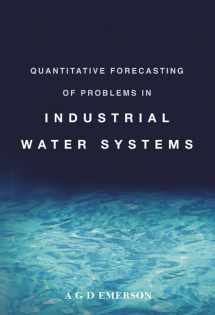
QUANTITATIVE FORECASTING OF PROBLEMS IN INDUSTRIAL WATER SYSTEMS (Chemical Engineering)
ISBN-13:
9789812381842
ISBN-10:
9812381848
Author:
A G D Emerson
Publication date:
2003
Publisher:
World Scientific Publishing Company
Format:
Hardcover
376 pages
FREE US shipping
Book details
ISBN-13:
9789812381842
ISBN-10:
9812381848
Author:
A G D Emerson
Publication date:
2003
Publisher:
World Scientific Publishing Company
Format:
Hardcover
376 pages
Summary
QUANTITATIVE FORECASTING OF PROBLEMS IN INDUSTRIAL WATER SYSTEMS (Chemical Engineering) (ISBN-13: 9789812381842 and ISBN-10: 9812381848), written by authors
A G D Emerson, was published by World Scientific Publishing Company in 2003.
With an overall rating of 3.6 stars, it's a notable title among other
books. You can easily purchase or rent QUANTITATIVE FORECASTING OF PROBLEMS IN INDUSTRIAL WATER SYSTEMS (Chemical Engineering) (Hardcover) from BooksRun,
along with many other new and used
books
and textbooks.
And, if you're looking to sell your copy, our current buyback offer is $0.3.
Description
This textbook is a diagnostic tool. It enables chemical engineers, water technologists and others involved with the design and provision of an industrial water system, while it is still at the design stage, to start with the chemical analysis of a water supply and make a quantitative forecast of the likely problems (scale and corrosion). It is thus possible to make provision for an appropriate water treatment programme from the very outset.The inclusion of a large amount of tabulated data allows results to be read off directly without making complex calculations. This is particularly useful for technologists working on site (for example when "trouble-shooting").The ability to make quantitative forecasts enables designers to meet accountants on level terms -- by justifying the cost of including a water treatment programme, and by giving a quantitative assessment of the hazards likely to be encountered if the recommended programme is not installed.Methods of water treatment are not discussed in this textbook, since they can change from time to time; the physical chemistry used in quantitative forecasting does not.


We would LOVE it if you could help us and other readers by reviewing the book
Book review

Congratulations! We have received your book review.
{user}
{createdAt}
by {truncated_author}


